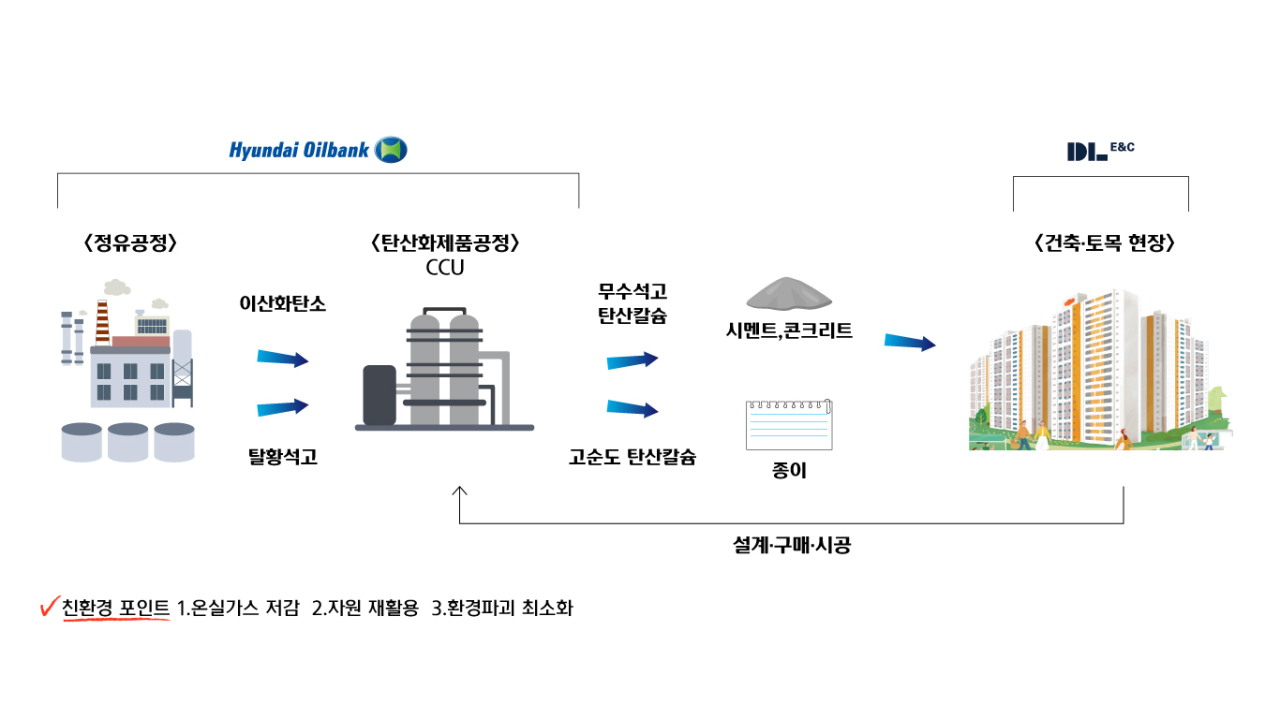 |
A concept image of how Hyundai Oilbank aims to capture carbon, turn it into construction materials and supply them to construction sites. (Hyundai Oilbank) |
Hyundai Oilbank is capturing carbon emissions and transforming them into raw materials used for cement and concrete at construction sites, as part of its carbon neutrality commitments.
According to Hyundai Oilbank Friday, it will collect byproducts generated from its petrochemical facilities such as desulfurized gypsum and carbon dioxide and turn those waste products into construction materials such as plaster and calcium carbonate.
Next year, Hyundai Oilbank will break ground on a production facility to manufacture up to 100,000 metric tons of carbon-transformed products annually. The firm aims to gradually increase the capacity to 600,000 tons.
Once completed, the facility is expected to capture 120,000 tons of carbon emissions per year, considering that 1 ton of carbon-transformed products are equivalent to capturing and using 0.2 tons of carbon dioxide. That means the facility can capture the same amount of carbon emissions as 10 million pine trees.
The carbon-transformed products will be supplied to construction sites as raw materials for cement, concrete and lightweight blocks. The carbon-transformed products are cheaper than sourcing new materials from mines, according to Hyundai Oilbank.
Hyundai Oilbank’s CCU technology is expected to support Hyundai Oilbank’s plan to produce 100,000 tons of blue hydrogen by 2025.
Hydrogen, though colorless, is given color labels based on its feedstock and production method. Blue hydrogen extracts hydrogen from natural gas but captures the carbon emitted during the process.
Also, the CCU technology is expected to find immediate application at Hyundai Oilbank’s petrochemical facilities. Hyundai Oilbank annually produces 200,000 tons of hydrogen from naphtha, natural gas and liquefied petroleum gas and uses it in a process called desulfurization. The process leads to 360,000 tons of carbon dioxide emissions.
Hyundai Oilbank is currently establishing the necessary infrastructure to address the issue. Starting next year, 200,000 tons of carbon dioxide emitted from hydrogen production at the firm’s Daesan plant will be supplied to nearby partners that manufacture dry ice and specialty gases that are used for making semiconductors.
The remaining 160,000 tons will be supplied to Hyundai Oilbank’s existing partner Sundo Chemical.
By Kim Byung-wook (
kbw@heraldcorp.com)







![[Robert Fouser] Accepting migrants in South Korea](http://res.heraldm.com/phpwas/restmb_idxmake.php?idx=644&simg=/content/image/2024/10/31/20241031050896_0.jpg)
